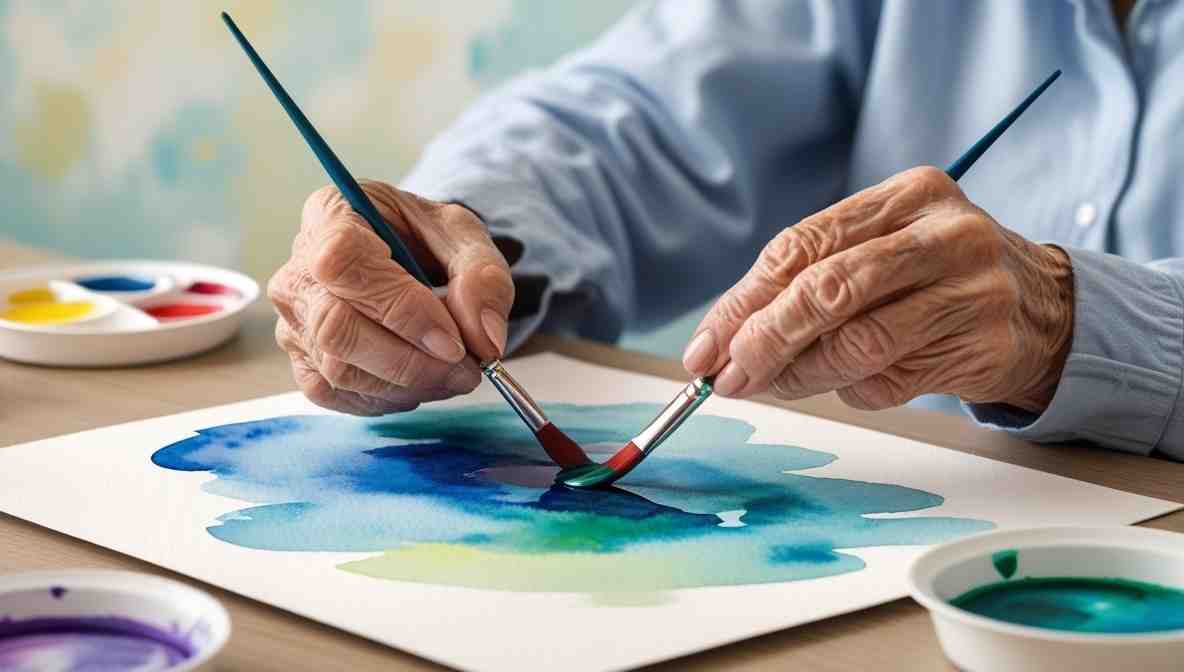Caring for individuals with dementia goes beyond meeting their medical needs—it also involves nurturing their emotional, mental, and creative well-being. One increasingly popular method for dementia patients’ entertainment is the watercolor painting activity. Gentle, colorful, and therapeutic, watercolor painting offers a wonderful outlet for self-expression and cognitive stimulation.
Why Watercolor Painting is Ideal for Dementia Patients
Watercolor painting is not just an artistic exercise; it provides significant therapeutic benefits, especially for those experiencing cognitive decline. The smooth flow of paint, the freedom of color choice, and the lack of strict rules make watercolor painting a stress-free and enjoyable experience. For dementia patients, this type of creative activity can:
- Enhance cognitive function by encouraging memory recall and decision-making.
- Improve mood and emotional health, reducing feelings of depression and anxiety.
- Boost fine motor skills through gentle brush movements.
- Foster a sense of accomplishment, which helps build confidence and self-esteem.
Unlike structured tasks, watercolor painting allows dementia patients to engage at their own pace, making it a perfect form of entertainment and therapy combined.
How to Organize a Watercolor Painting Activity for Dementia Patients
Creating a welcoming and supportive environment is essential. Here are some tips for organizing a successful watercolor painting session:
- Prepare Safe, Easy-to-Use Materials: Use non-toxic, washable paints and large-handled brushes that are easier for older people to grip.
- Set a Calm Atmosphere: Soft background music and natural lighting can create a soothing space where patients feel relaxed and inspired.
- Offer Gentle Guidance: Encourage freedom but provide simple prompts like “paint your favorite flower” or “choose happy colors.”
- Celebrate Creativity: There is no right or wrong in art. Celebrate every piece to help dementia patients feel valued and motivated.
- Create a showcase: Display their artworks in the care facility or home, giving them a lasting sense of pride and achievement.
Emotional and Social Benefits of Watercolor Painting
Watercolor painting also promotes social interaction, especially in group settings. Patients often share their work, stories, and smiles during these activities, building emotional connections and reducing feelings of isolation.
Moreover, caregivers and family members can join these sessions, creating meaningful bonding moments that transcend verbal communication—a powerful gift for both patients and their loved ones.
Conclusion
Introducing a watercolor painting activity as a form of entertainment for dementia patients can bring incredible emotional, cognitive, and social benefits. It’s a gentle yet powerful way to enrich their daily lives, allowing them to express themselves, find joy, and connect with the world around them. By making art a regular part of their routine, we offer dementia patients not just entertainment, but a beautiful path to dignity, creativity, and inner peace.
FAQs: Watercolor Painting Activities for Dementia and Alzheimer’s Patients
1. What are some good painting projects for dementia patients?
Simple and colorful projects work best, such as painting flowers, sunsets, or abstract designs. Watercolor painting allows dementia patients to express creativity without pressure, making it an ideal activity.
2. What are the best dementia painting ideas?
The best ideas are easy, relaxing, and open-ended. Try ideas like painting favorite memories, seasonal themes (like autumn leaves), or free-form color blending, which stimulate both imagination and memory.
3. Why is art important for dementia patients?
Art encourages self-expression, emotional release, and cognitive engagement. For dementia patients, painting can boost mood, reduce anxiety, and even help maintain fine motor skills.
4. What are some easy art projects for dementia patients?
Easy projects include finger painting, watercolor washes, coloring large outlines, and creating abstract pieces. The goal is to focus on enjoyment, not technical skills.
5. How does watercolor painting help Alzheimer’s patients?
Watercolor painting is soothing and requires minimal pressure on the hands, which is gentle for Alzheimer’s patients. It supports memory recall, reduces stress, and encourages social interaction.
6. What are fun painting activities for Alzheimer’s patients?
Fun activities include group mural painting, freehand watercolor designs, or painting to soft music. The key is to provide freedom and celebrate every creation without judgment.
7. Can Alzheimer’s patients enjoy watercolor painting?
Yes, Alzheimer’s patients often find watercolor painting both calming and stimulating. The flowing colors and simple brushstrokes make it a therapeutic and enjoyable hobby.
8. Are abstract paintings good for dementia patients?
Absolutely. Abstract paintings allow dementia patients to express emotions freely without the need for detailed planning. It’s a wonderful way to foster creativity and provide emotional comfort.

